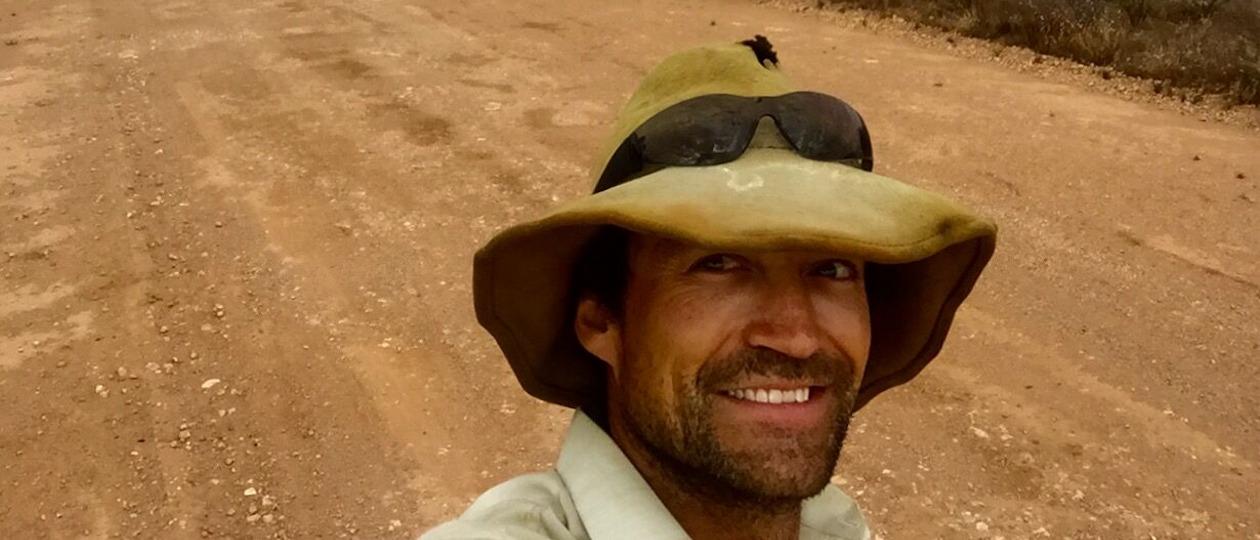The wild harvester
Wattleseed is one of the most versatile Australian bush foods, favoured for its nutty taste, nutrient density, and drought hardiness.
In the Jones family, Angus (not Indiana) is the true raider of lost acacias! ©Angus Jones
Following a spectacular golden flowering affair in spring, acacia trees produce the highly prized wattleseed pods. This ancient bush food has both an impressive flavour and nutritional profile. It boasts 20% protein, over 50% fibre and contains calcium, iron and magnesium among other vitamins and minerals.1
In South Australia, wild harvester Angus Jones is championing this emerging industry, sourcing high quality seed for culinary use, which he sells both locally and internationally. “A lot of people are starting to realise it is a sustainable food source for the future. It’s something different, something ancient, and something we can incorporate more and more into our modern eating. And the more the better, the benefits are exponential!”
The life of a harvester
But harvesting the seed is no easy feat, it is an extremely seasonal and precisely timed operation. Unlike traditional European crops which offer a number of months for harvesting, the available window for wattleseed can be as short as only a couple of days per year. Angus sources most of his seed from Acacia Victoriae, a species which gives him about four weeks to reap his annual crop.
Weather has a huge impact on plant growth, flowering and seeding, especially in the unpredictable arid deserts of Australia. This means Angus is on constant weather watch to determine the stage of the seeds. “I’m always checking the Bureau of Meteorology, looking for where rain has been and watching for flowering events.”
The hot northerly winds of the central Australian desert dry the pods out quickly after ripening. Angus must quickly mobilise a team of staff to travel to remote harvesting locations before the pods fall to the ground. “It’s not easy work and it’s not for everyone. We’re harvesting in the desert, in the summer, where temperatures frequently reach 45°C. Wattle dust can irritate the skin, plus acacias are home to plenty of ants and spiders which you have to be prepared to land on you!”
Aluminium poles are used to knock pods off the trees into purpose-made PVC tarps, which are then mechanically processed on site to reduce the risk of contamination. A thresher breaks open the husks before the seed is cleaned and graded on a vibrating table. The remaining pods, sticks and leaves are turned into a nitrogen-rich mulch, which Angus uses on his acacia orchard in the Adelaide Hills.
Angus collects around half a tonne each year off private property. He provides a welcomed service to landholders, controlling the spread of this fast growing species.
Culinary uses for wattleseed
Just like coffee beans, wattleseed undergoes a roasting and grinding process. Roasting cracks open the hard shells, just as a bushfire does to promote germination. It also changes the taste from a lighter, pea-like flavour to richer, darker and more chocolatey tones.
Ground wattleseed is most commonly used for baking, adding a delicious earthy rich flavour and colour to breads, biscuits, pancakes, scones and cakes. Modern-day chefs cannot claim the credit for this idea though, because aboriginal Australians have been using wattleseed to make an energy-dense flatbread for tens of thousands of years.
In kibbled form, it can be used in raw food; it is a great high-fibre addition to smoothies or to sprinkle on breakfast cereal or salad. Infusions are also popular and many Australian chefs are experimenting with their own sauces and dressings.
But Angus cannot go past a freshly brewed ‘wattleseed coffee’. “I grind the seed espresso style, simmer for a minute or two, strain it and drink on its own or with a little bit of honey. It’s a beautiful coffee substitute hot or cold, with or without milk.”
A drought resistant species for food security
Since acacias evolved in the harsh Australian outback, they thrive in climates where most cereals and legumes struggle. Over the past decade, extensive trials conducted in the tropical drylands of West Africa have led to the integration of acacias into local agricultural systems.2 The seeds ripen during a time of low labour demand and can yield up to five times the profit of other crops by comparative land space. In a win-win for farmers, the seed can also be stored for ten years without loss of quality.
There is funding going in to research and development in Australia too, where Angus says the largest challenge is meeting demand. “Wattleseed is growing from a cottage garden industry to a commercial scale. It has its challenges, but has huge potential to be farmed and is a great alternative for landholders looking for low-impact crops”























